Affiliate links on Android Authority may earn us a commission. Learn more.
How to turn sticky keys on or off in Windows
Published onMay 10, 2023
Windows has many accessibility features that make it easier for anyone with impairments to use. Apart from visual and auditory accessibility features, Windows has a “sticky keys” feature that helps those with physical impairments, reduced motor skills, or injuries that make using the keyboard difficult, especially when needing to press two keys simultaneously. Here’s what you need to know about sticky keys on Windows and how to turn the feature on or off.
QUICK ANSWER
To turn sticky keys on or off in Windows, go to Settings > Accessibility > Keyboard (in the Interaction section) and toggle on Sticky keys. Open the sticky keys settings and ensure that the keyboard shortcut is enabled. Then, you can press the Shift key five times quickly to enable the feature. There are a few other ways to turn sticky keys on and off, from the Windows sign-in page, using the Quick Settings menu, and the Control Panel.
JUMP TO KEY SECTIONS
What are sticky keys in Windows
The sticky keys feature lets you use modifier keys like Ctrl, Alt, Shift, and the Windows key without pressing the modifier key simultaneously with another key. Activating the feature keeps the modifier key enabled even when you are not pressing them. For example, if you are trying to copy-paste something, you can activate the Ctrl sticky key and press C and V on the keyboard, instead of Ctrl+C and Ctrl+V. There are a few different ways to turn sticky keys on and off Windows.
How to turn sticky keys on in Windows
Use the settings menu
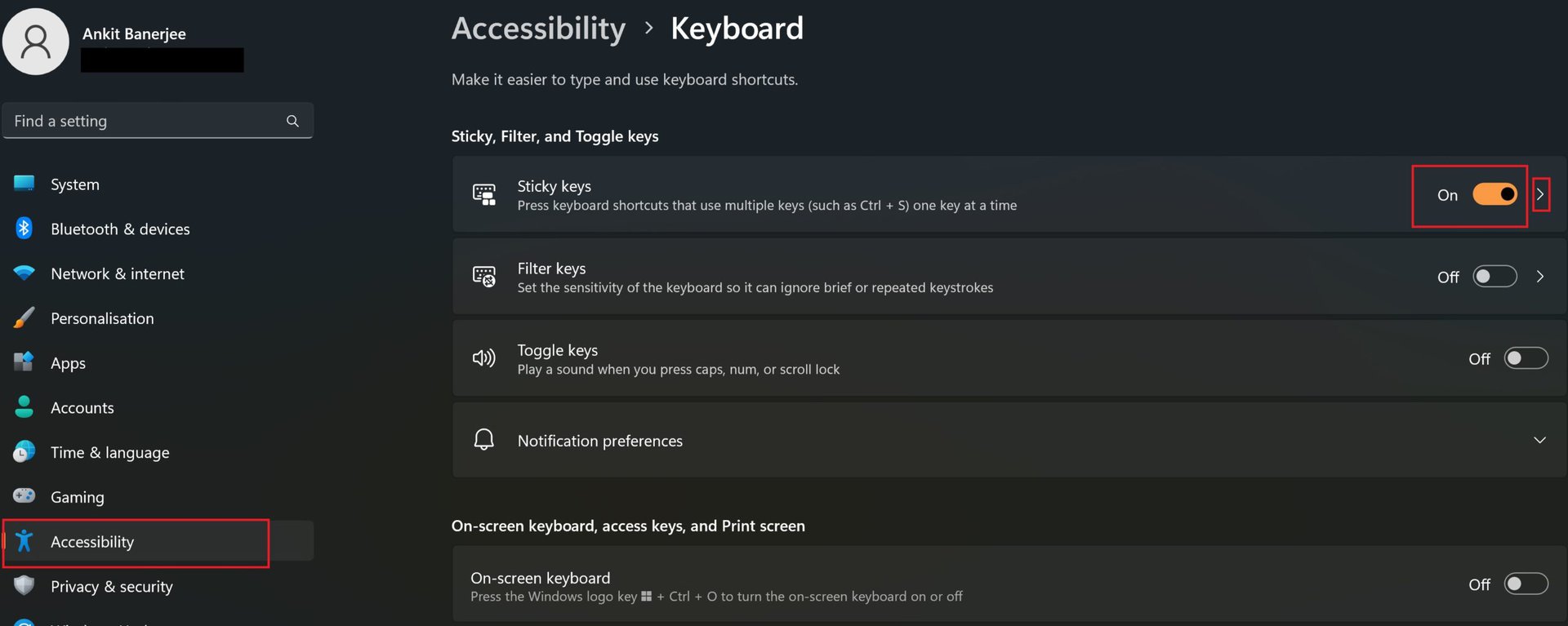
Go to Settings > Accessibility > Keyboard (in the Interaction section) and toggle on Sticky keys. Clicking on the Sticky keys bar will take you to additional settings that you can adjust to better suit your experience.
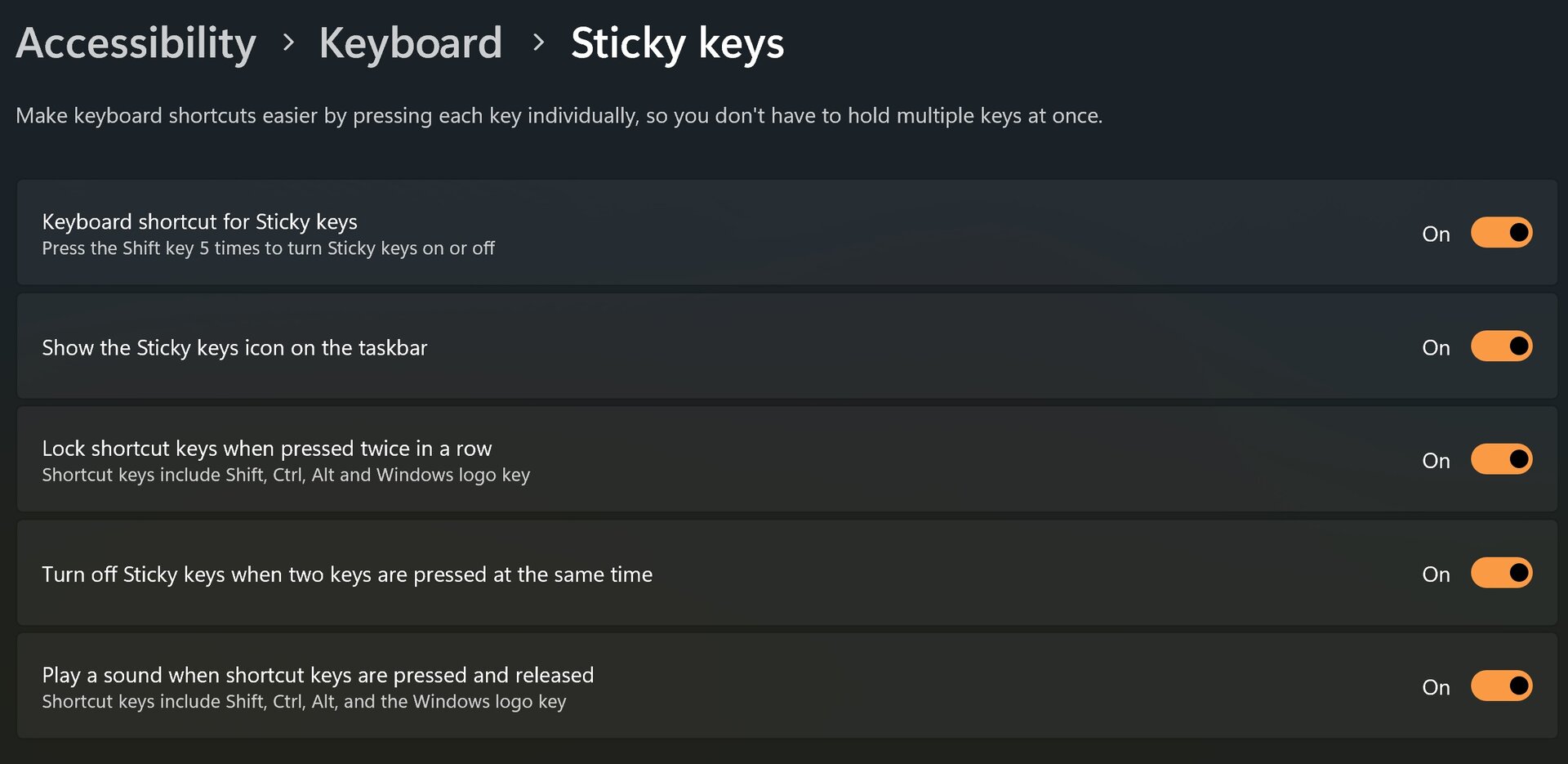
You can enable or disable the keyboard shortcut and set whether you see the sticky keys icon in the taskbar. You have the option to lock shortcut keys when you press the modifier key twice, which is useful when performing tasks that require the same modifier, like copy-paste. Finally, you can also set up a sound that will play when a sticky key is turned on or off.
Use the Quick Settings menu
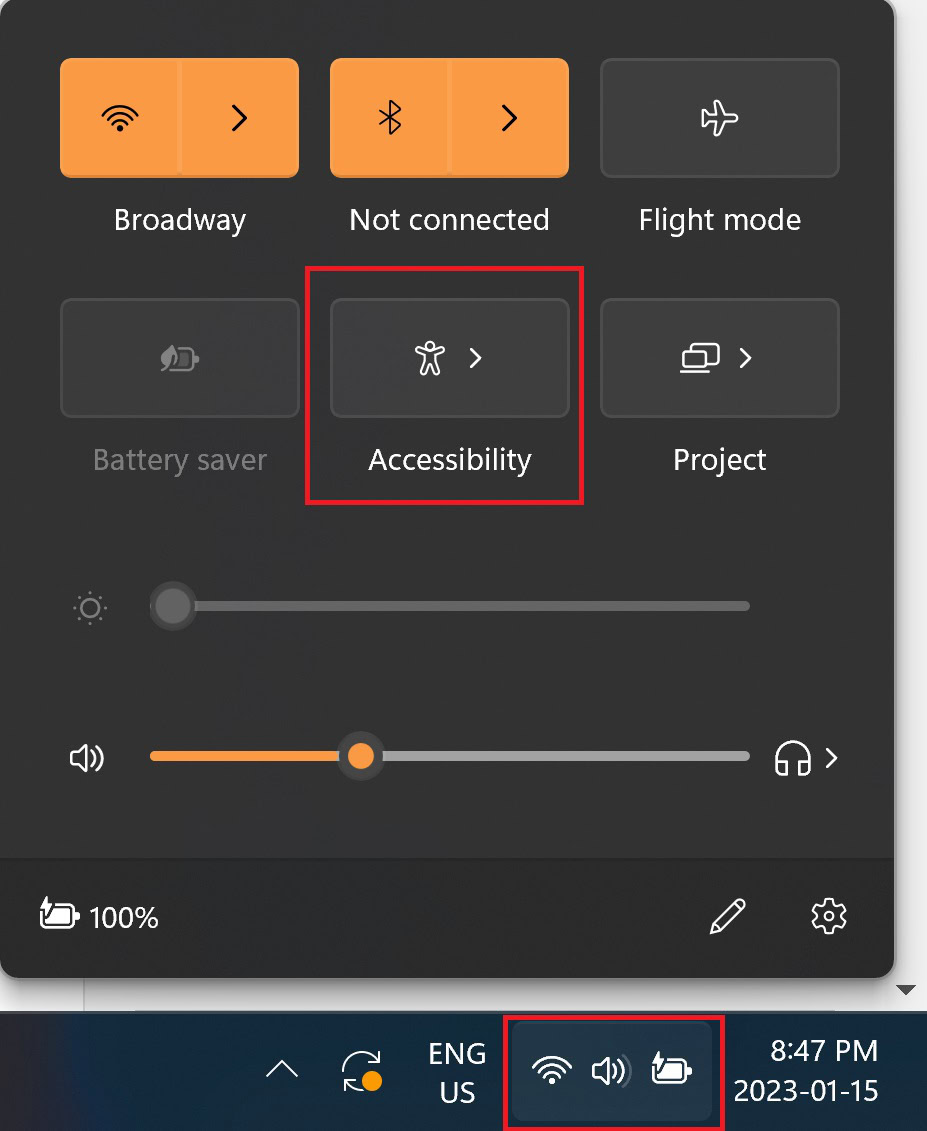
Windows has a built-in Quick Settings menu that provides easy access to Wi-Fi and Bluetooth settings, Airplane mode, volume controls, and more. You’ll also find a quick access button for accessibility features.
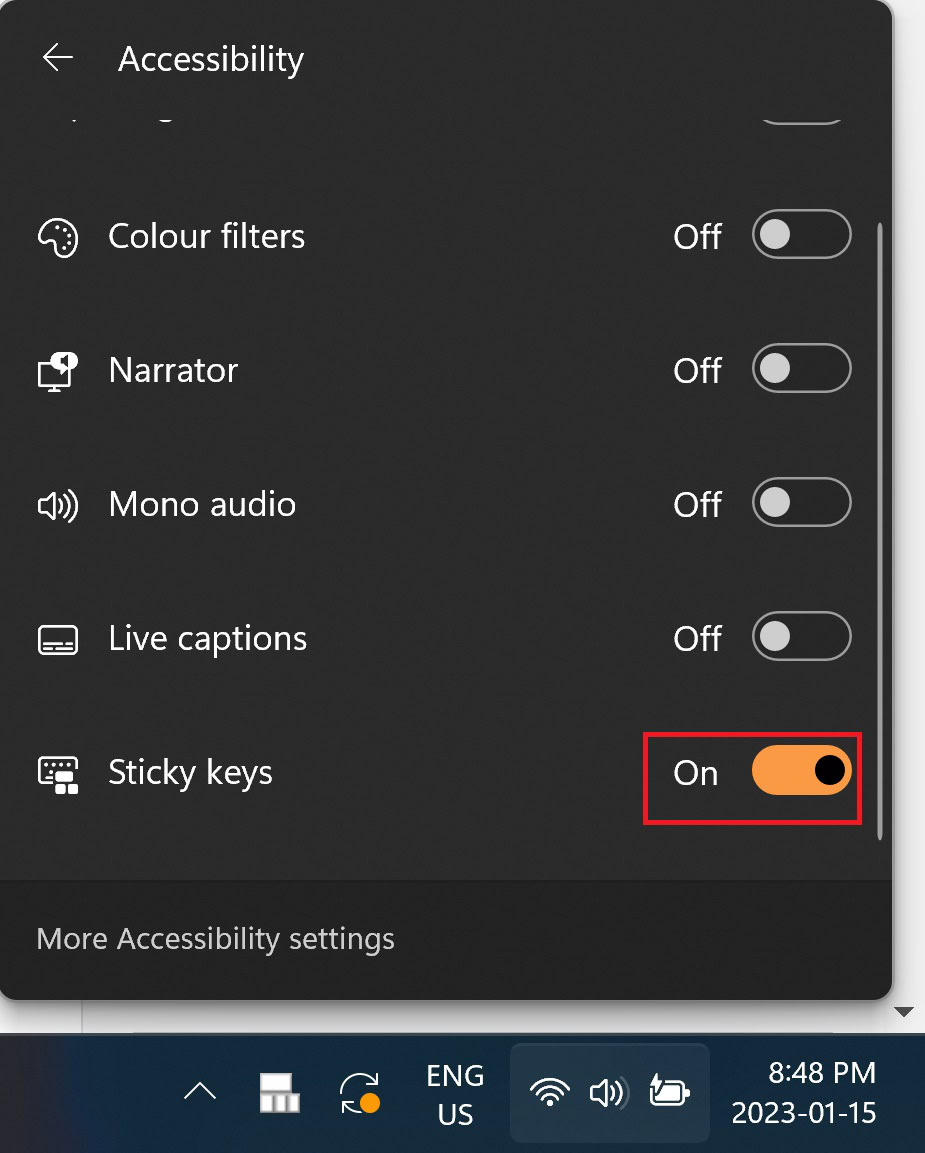
Open the Quick Settings menu by clicking on the section in the taskbar that shows the Wi-Fi, volume, and battery icons. Click Accessibility and toggle on Sticky keys.
Use the keyboard shortcut
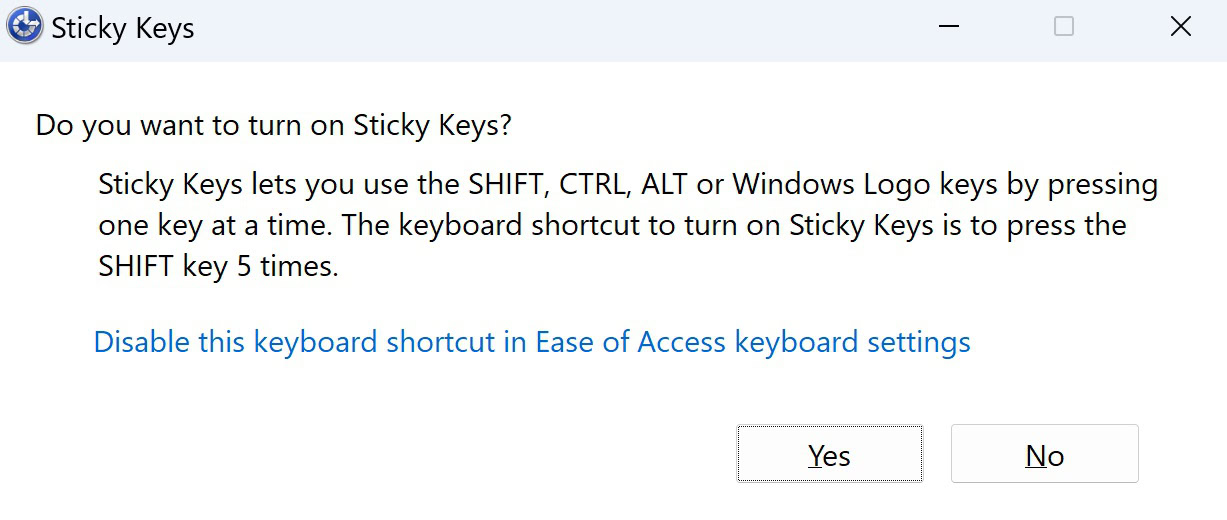
The keyboard shortcut is the fastest way to turn sticky keys on and off, as long you have enabled the shortcut in the settings (it is enabled by default). Press the Shift key five times quickly and select Yes in the pop-up.
Turn on the sticky keys on the sign-in screen
You can enable or disable sticky keys even before signing in to your Windows account. Click on the accessibility icon at the bottom right corner and toggle on sticky keys.
Use the Control Panel
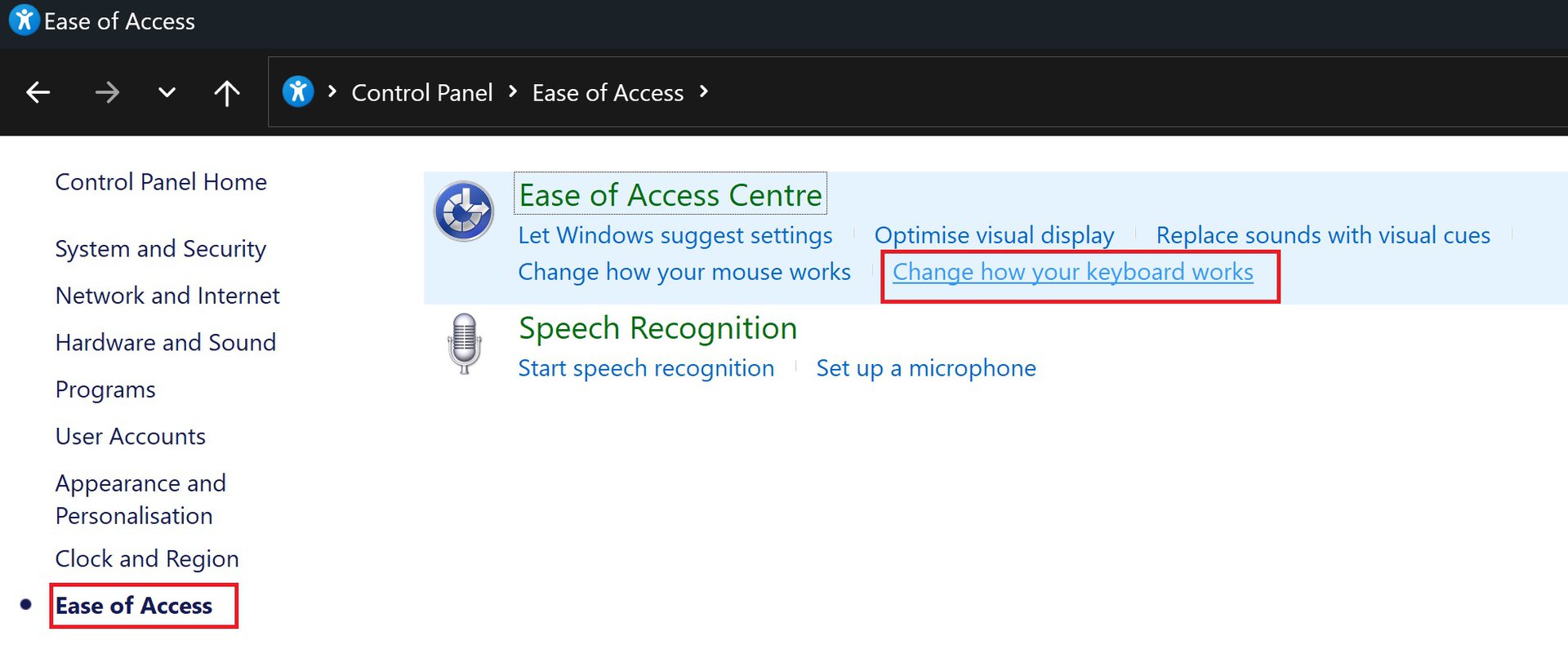
Open the Control Panel and go to Ease of Access > Change how your keyboard works. Enable or turn off sticky keys by checking or unchecking the box next to the settings.
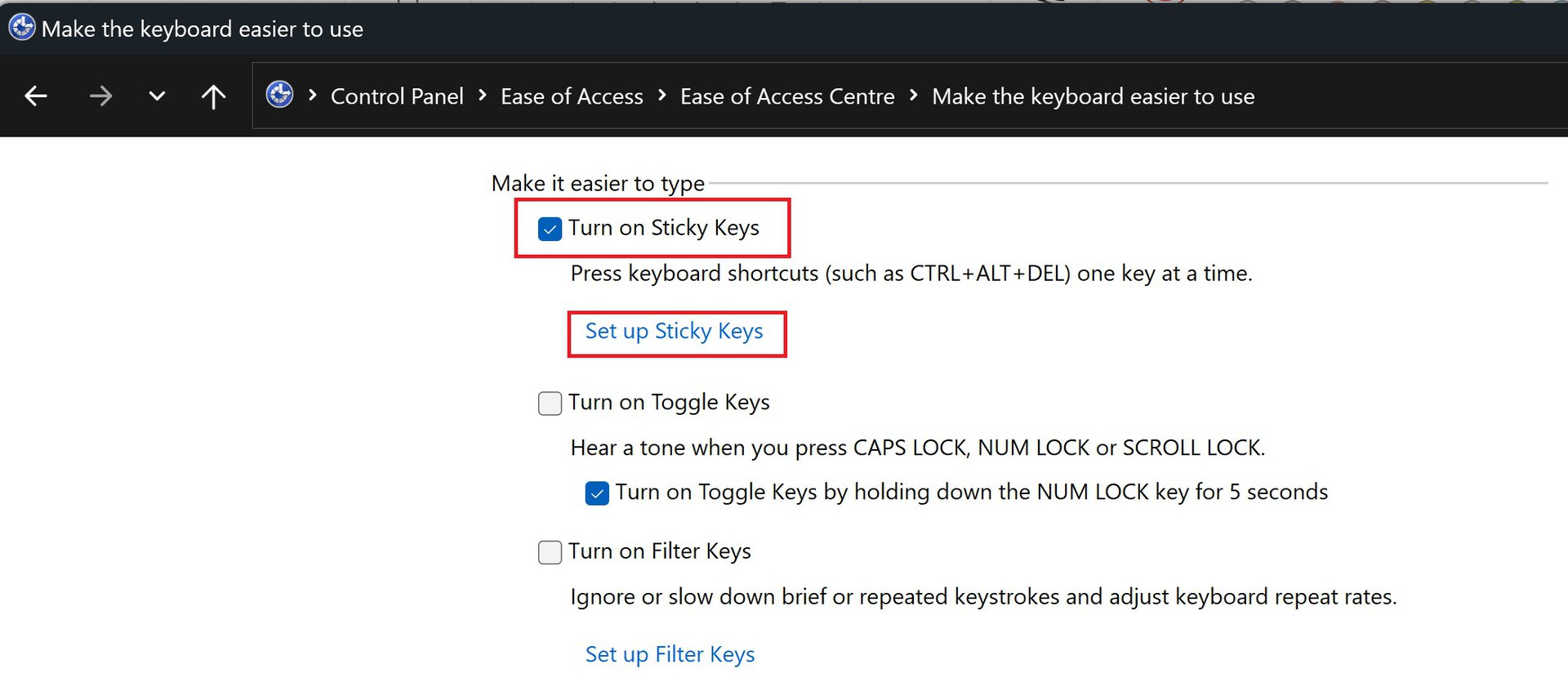
Click on Set up sticky keys to find different settings like the keyboard shortcut, feedback (sound or visual) settings, and other options.
How to turn sticky keys off in Windows
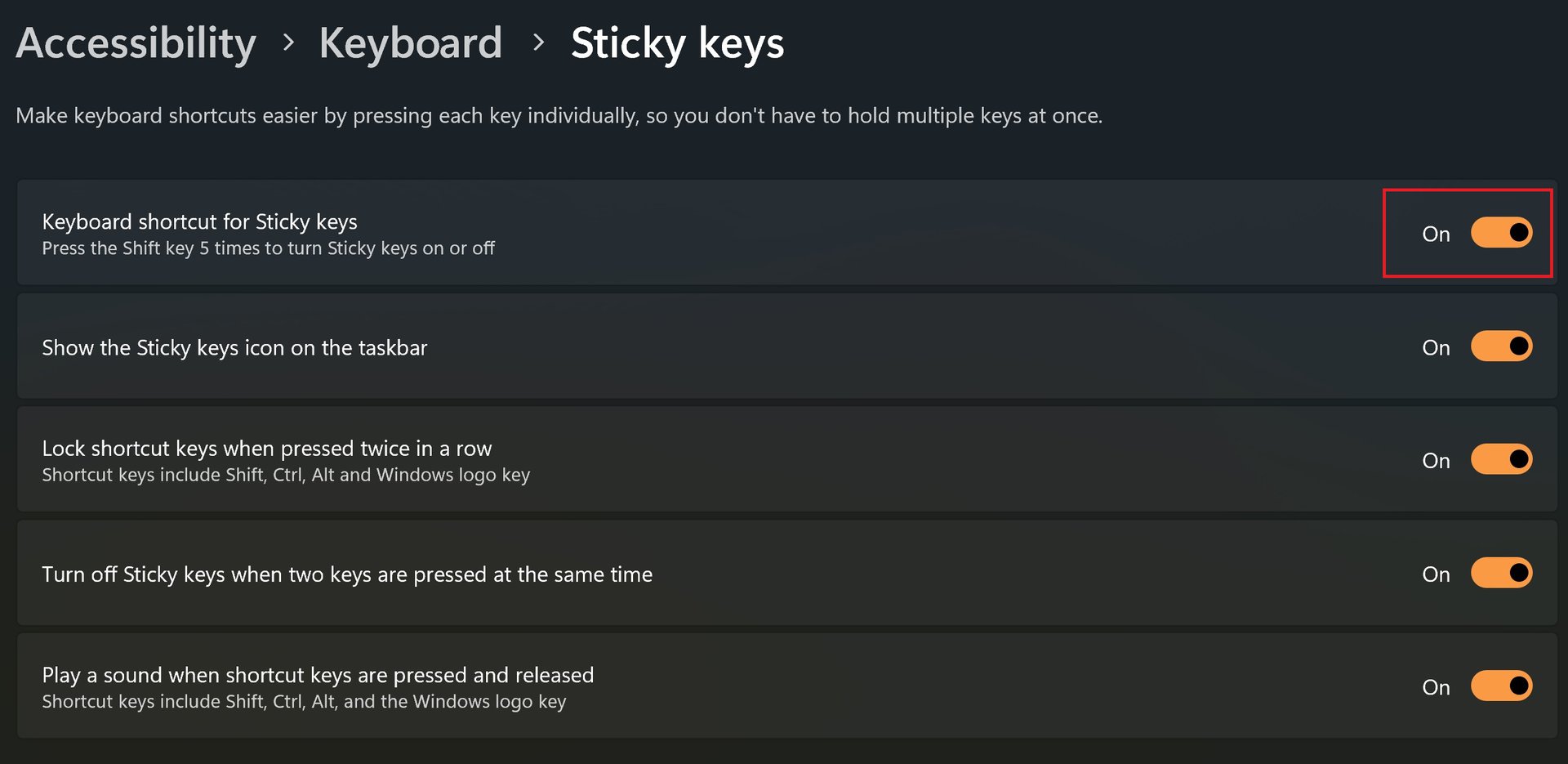
Any of the options used to turn on sticky keys on Windows can also be used to turn off the feature. The easiest way is to use the keyboard shortcut. Press the Shift key five times quickly to disable the feature.
The keyboard shortcut might be a problem if you don’t want to use sticky keys, though, and there’s a chance of accidentally enabling the feature. To make sure that the sticky keys feature doesn’t get in the way, you will need to disable the keyboard shortcut. Go to Settings > Accessibility > Keyboard > Sticky keys and toggle off Keyboard shortcut for sticky keys.
How to use sticky keys in Windows

After turning on the sticky keys feature on Windows, you will see the icon appear in the taskbar. The icon is a visual indication of the modifier and Windows keys. It takes a while to learn which modifier key each box represents, though. The rectangle at the top represents the Shift key. In the bottom row, the left key is for Ctrl, the middle is the Windows key, and the right box represents Alt.

The icon shows you if a modifier or the Windows key is activated. When you press any of the modifier keys, the associated rectangle in the icon will turn black to show that it is on. For example, in the screenshot above, the Shift and Alt keys are active. The modifier key stays on until you press another letter or number key, if you press any non-modifier key that doesn’t have a related function, or until you click the mouse.
If you don’t want to keep activating a particular modifier key, you can lock it by pressing the key twice. Pressing the same key a third time will unlock it again. So if you’re performing multiple functions with the same modifier key, like Ctrl+C and Ctrl+V to copy-paste, you can lock the Ctrl modifier key by pressing it twice, and then tapping C and V on the keyboard.